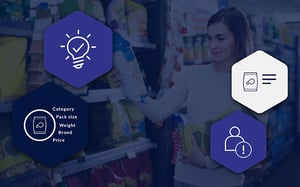Product attributes are the features, quality, and design of a product that work together to get your customers to make a purchase. However, little is known about which attributes influence merchandise selection of specific product categories. Then there is the question around product attribute clustering. What is it? More importantly, is it worth your time and effort?
In this article, we’ll help you understand which product attributes are important to your customer and how to use this information to achieve a competitive advantage through category-based clustering.
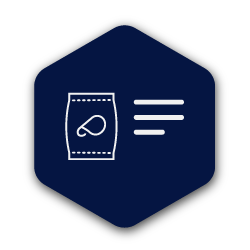
What are product attributes?
Attributes are the components of a product that are linked to its physical nature, uses, and benefits. A product’s attributes make it unique and different from other products. Attributes are factors such as pack size, flavor, color, and price.
However, the importance placed on these attributes by consumers will differ from category to category. For example, attributes that influence food product selection might be taste, cost, nutritional value, convenience, and flavor. On the other hand, attributes that influence DIY product selection may be cost, end-use, color, and quality.
You can define product attributes as intrinsic or extrinsic factors. Intrinsic factors make up the physical product and cannot be changed without altering it. Examples of intrinsic factors can be flavor or power (e.g. 1500W).
On the other hand, extrinsic factors are external variables that you can change without altering the physical product. Examples of extrinsic factors can be brand, packaging design, or price. These factors influence how your customers evaluate, select, and purchase products so you can use them as indicators of quality and value for money.
Consumers are becoming more interested in the products they purchase and consume. This, coupled with an increased demand for more affordable, convenient, and personalized products has resulted in businesses needing to step up their game and provide a top-tier shopping experience.
This means that consumers, retailers, and suppliers should know what product attributes are and why they are important. While subconsciously, consumers use product attributes to make a purchase decision. Meanwhile, as a retailer, you’d need to understand them to build assortments and plan your retail space.
If you’re a supplier or manufacturer, you need to analyze product attributes to create products that consumers need and define their competitive advantage.
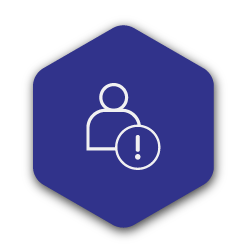
How do you know which product attributes are most important to consumers?
Although it is important to understand all the attributes of the products within each category, a detailed understanding of the product preferences and purchasing patterns of your customers will help you to improve the implementation of category management strategies.
As a retailer or supplier, you need to understand which attributes are most important to your customers so that you can improve your product offering and the accuracy of cluster analysis. There are a few ways that you can retrieve this information from your customers:
- You can conduct market research in the form of surveys and questionnaires to determine which product attributes are most important to your consumer. Surveys use techniques such as conjoint analysis, heat maps, and virtual shopping exercises to monitor consumer behavior and product attribute preferences;
- You can use text mining of product reviews and overall customer feedback to identify specific attribute keywords. This will give you information about which attributes consumers like and dislike;
- Comparisons of similar, successful products may give you an insight into which attributes consumers are focused on for a particular product category. For example, in the health foods category, products with all-natural ingredients tend to be best sellers. This indicates that ingredients are an important product attribute;
- Monitoring what is said about your brand is another way to assess what your customers value about your products; and
- Shopper surveillance in stores via cameras and eye trackers is a high-tech approach to assessing the importance of product attributes. You can use these technologies to see which parts of a product a consumer looks at first or spends the most time evaluating. For example, in the breakfast cereal category, a consumer may look at the product price first, indicating a degree of price sensitivity.
- Loyalty card data can be used due to the demographic information that can be retrieved. The products purchased by particular shopper profiles can be analyzed to understand the importance of certain product attributes. For example, if women between the ages of 20-25 purchase house-brand toiletries, this may indicate price sensitivity within this category and a focus on value for money.
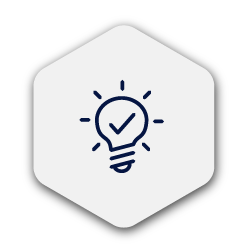
Why do you need to understand product attributes for clustering and assortment planning?
A frequently asked question by the advertising, assortment planning, and production planning functions is what product characteristics are most important in the consumer decision-making process.
Consumer behavior is dynamic and can be understood at a basic level when you take a look at product attributes. Once you have an understanding of which attributes are most important for a particular product category, you can use them for cluster analysis. Product attribute clustering produces clusters that can be understood to create customer-centric assortment plans.
You can then use the clusters to predict which new products will do well in the current market as well as which products your customers are more likely to repurchase.
When data requirements are considered, product attribute clustering arranges data into a table based on the proximity of certain features. This helps reduce the amount of data that your business needs to process and improves the query time for information from a database. This approach is beneficial because it allows you to define a product using a combination of factors to create a profile.
When you understand the order of importance for product attributes, a relative utility of each attribute can be assigned a weighting to be used in the cluster analysis. You can also profile and understand your customers during this process based on their prioritization of particular attributes. This is helpful if you don’t have access to loyalty or shopper basket data.
Ultimately, product attribute clustering will help you to identify gaps in the market, areas for improvement in product development, and methods to serve your target market to boost customer loyalty.
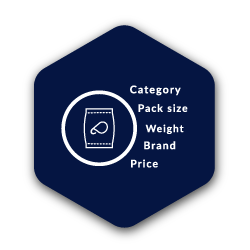
What is product attribute clustering and how does it work?
Product attribute clustering is a well-known and well-used clustering method. With it, you’d group your stores based on the performance data of specific product attributes for a particular category. You can use this approach for any category where strong, identifiable customer preferences exist for particular product attributes.
It’s also worth using this approach for a category where consumers are extremely brand loyal.
This approach may be beneficial as your buyers can provide a product range that satisfies the needs and wants of the target market. However, a challenge may arise with the added complexity of the level of clustering. Multiple clusters may have to be created and updated regularly according to changes in consumer preferences and demand.
This method also doesn’t account for available floor and shelf space by identifying a range cap. Therefore, this is a factor that buyers would need to consider so as not to under or over-range the assortment.
When you use product attribute clustering, it is important to consider one category at a time. Below is an example of how you’d analyze products according to the attributes within the non-perishable snack category. This information is typically stored within your database using product tags imported via the POS system and the product description.

To begin product attribute clustering here are the steps you are likely to follow:
- You will need access to attribute-level data such as brand, pack size, unit of measure, flavor, price, etc. You can obtain this information from standard POS data collected at your till point with each transaction;
- Define and measure your attributes so that you can compare them. For example, all mass measurements must be in g(rams) for products within the non-perishable snack category;
- You must complete an analysis to determine which attributes are most important to your target market (e.g. select the top five that you would like to use for clustering);
- Select a clustering algorithm suited to categorical data such as k-means to run the cluster analysis;
- Analyse the clusters and ensure that the results are presented in an easily understandable manner (e.g. in tabular format so that buyers can understand and work with this information);
- Once you have identified the attribute clusters, you can go one step further to analyze the demographic data for each cluster. If you can identify significant relationships between certain demographic variables of each cluster, this will provide insight into the behavior, wants, and needs of your target market that you can use to build a customer-centric assortment plan;
- You can also make predictions about the consumers of each cluster and the products they are likely to buy, based on collected data; and
- Once you have completed the cluster analysis, your buyers can consider and rework the category, subcategory, and segments to ensure that you are satisfying customers with your product offering.
Conclusion
Product attribute clustering can help you reach your business goals with an in-depth understanding of your product offering and target market. However, there are many other clustering methods you might want to look into before choosing one that is right for you.
Looking for assistance when choosing a clustering method for your business? Let DotActiv help. Book your software and services demo with a DotActiv expert.


